January-February 3, 2011
Welcome to 2011. This year we are starting off with more trees in the greenhouse than ever before. The rainy season commenced in late December and after a slow start appears to have really gotten going now with regular rains and sprinkles during many of the nights. The days are hot, humid and sunny, perfect for the plants.
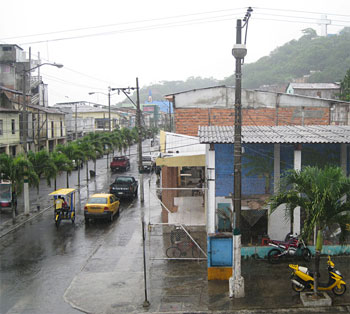
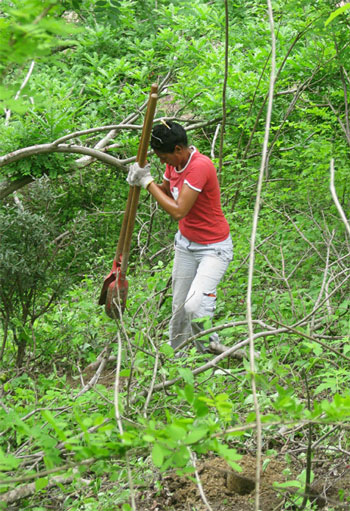
Ishrat digging holes at the Universidad Catolica site.
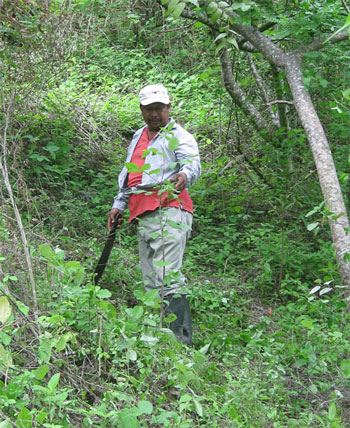
Orlando clears weeds and vines off recently planted trees on the hills behind the greenhouse.
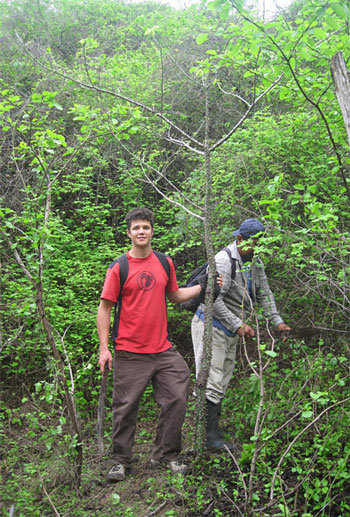
A previous volunteer, Jasper, visits a revegetation site from 2007 with trees between 2 and 3 meters in height.
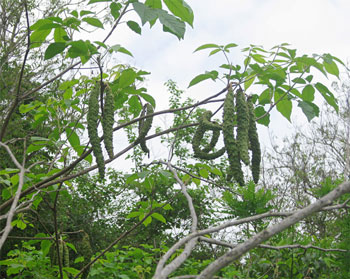
Guayacan seeds ripen on young Guayacan trees we found at the Dr. Parra site.
The volunteer situation has improved dramatically since the second half of 2010. There are currently 3 volunteers in house, with more slated for arrival in the coming weeks. Additionally, there have been a handful of others who have come to lend a hand on a more or less regular basis, depending on their situation. We are happy to have the help, since as always, there’s tons of work to be done. Everyday there are between four and seven people heading out to do some revegetation work.
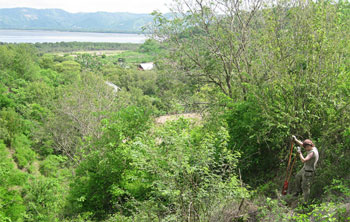
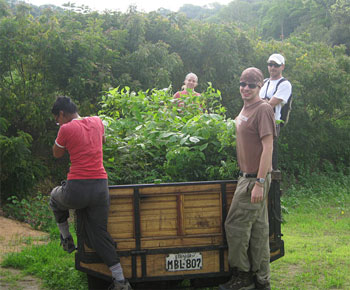
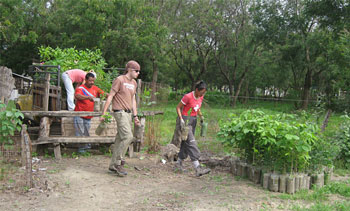
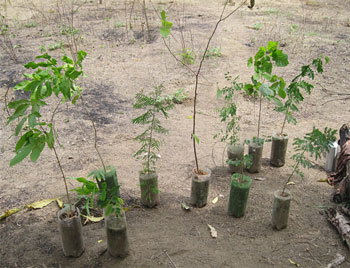
We have been prepping and planting more sites. There are currently four revegetation sites underway and we are working on acquiring more. The revegetation site behind the greenhouse is completed with over 500 trees and the Dr. Parra site nearby continues to expand as we make more trails, dig more holes, plant more trees and finally mark them with bamboo stakes.
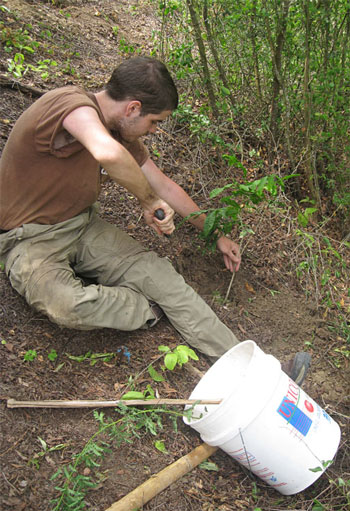
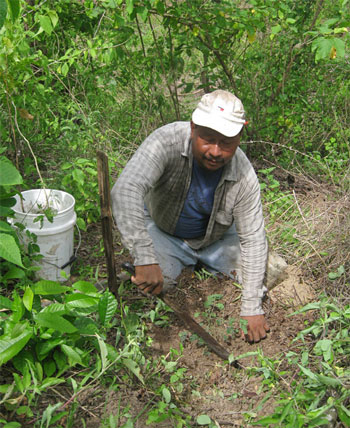
Each of these steps is time consuming and incredibly demanding work. Fortunately we have a highly motivated crew right now who bring a great positive attitude. Trails can take days to make throughout a multiple hectare site. Hundreds of holes must be dug, work that can be painfully slow when overnight rains make the soil muddy and incredible sticky. Trees must be transported to the sites and from there up hills to where they will be planted.
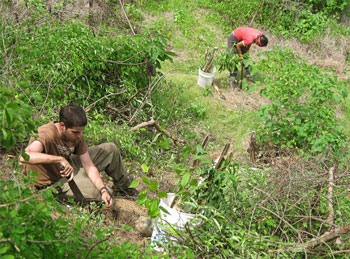
Orlando ingeniously came up with the idea to use recycled paint buckets for carrying trees. Each bucket perfectly holds 4 trees, which is about how much one person can manage to carry, especially if the trail is steep. Armed with a bucket of trees, a machete and a knife for cutting the trees out of the plastic bottles, the volunteers penetrate the dry-tropical brush, restoring this highly damaged ecosystem by carefully planting one native tree at a time.
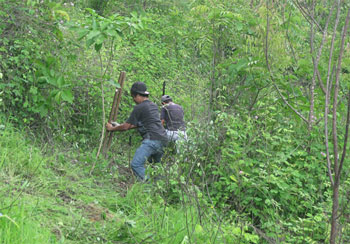
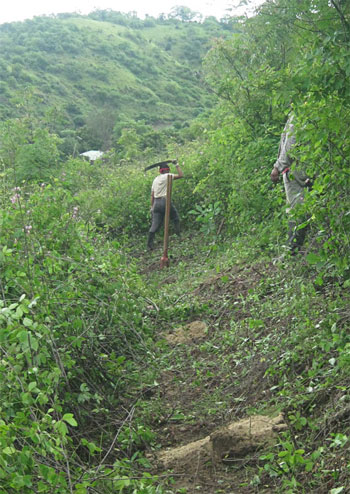
The light rains have also been great for weeds and we’ve had to be vigilant as to not lose track of the trees that have already been planted. Vines are the biggest threat to a small tree since they can grow multiple inches per day and once wrapped around a tree will seriously stunt its growth.
The greenhouse has also been kept in spectacular shape and there are well over 4,000 trees from last year to be planted this rainy season. The rains caused several hundred more seeds to germinate in the seeds beds that we thought had already been emptied. Jaboncillo, Bototillo, Algarrobo and Guachepeli trees were all transplanted and the beds turned for future planting. The greenhouse has been kept tidy and we have received several groups to show off our native tree vegetation project.
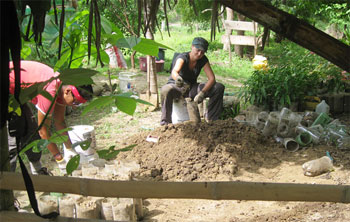
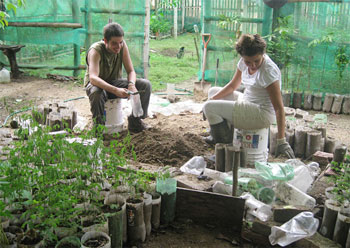
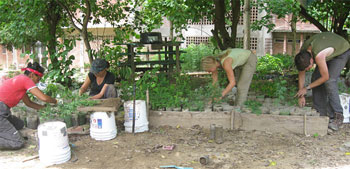
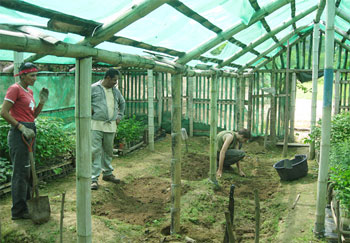
Keeping the weeds back consumes a lot of our time. The compost pile has grown with all the organic scraps we’ve been collecting and production coming out of the end of the trench has been excellent in quality.
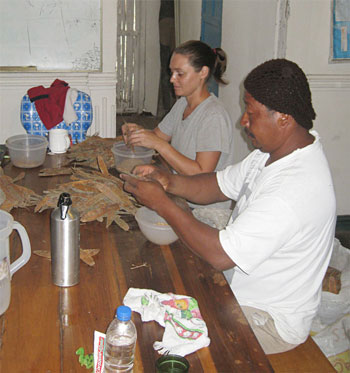
The social networking aspect of our mission has also increased during 2011. Many people and organizations have been writing to collaborate by sending volunteers or in other ways. Current volunteers have been actively recruiting others and spreading the message. Additionally, we have made plans with an ex-volunteer, Jasper Oshun, who now runs an organization of his own, to donate trees to be planted by national and international volunteers at the Punta Gorda Reserva, which is run by Planet Drum Bioregionalismo coordinator and teacher Ramon Cedeño.

Their group will receive between 500 and 1,000 trees from the Planet Drum greenhouse for their tree planting trip at La Gorda in March and April. In exchange, they will help organize local volunteers (under the coordination of ex-Bioregionalismo class assistant and Bioregionalista extraoridinaire Raisa Torres) to help produce the same number of trees at the Planet Drum greenhouse for planting next year.
We received film-maker Karney Hatch to make a short about Planet Drum Ecuador and its projects. Karney stayed with us for 6 days, filming Bahia, volunteers, the work and all aspects of our projects. Keep an eye out in the coming weeks for the internet release.
In a final piece of news, Molly Thomas, the first Bioregional Sustainability Institute student, completed her 3-month stay in Bahia. Among revegetation, bioregional education and ancient culture studies, she completed a personal project which focused on water use in a neighboring community to Bahia, Bellavista. She conducted an extensive interview of water use among over 60 households. The data she collected will remain with Planet Drum and the community for use in future projects.
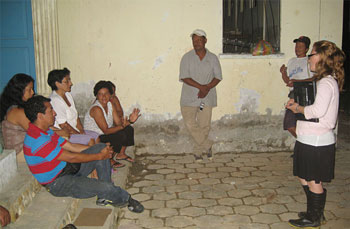
Molly managed to further unite an already tightly knit community and rallied residents to pursue a more equitable water distribution system, coupled with increased education about water conservation importance and sustainability issues. Each household received at least one native fruit-bearing tree from the Planet Drum greenhouse and through workshops with the community they were instructed how to plant and care for their trees. The most popular trees were Pechiche, Chirimoya and Guayaba. In total, over 140 trees were donated to the community. Thanks for your hard work and dedication, Molly, your work in Bellavista will have a lasting impact.
Pásalo bien,
Clay

Reader Interactions